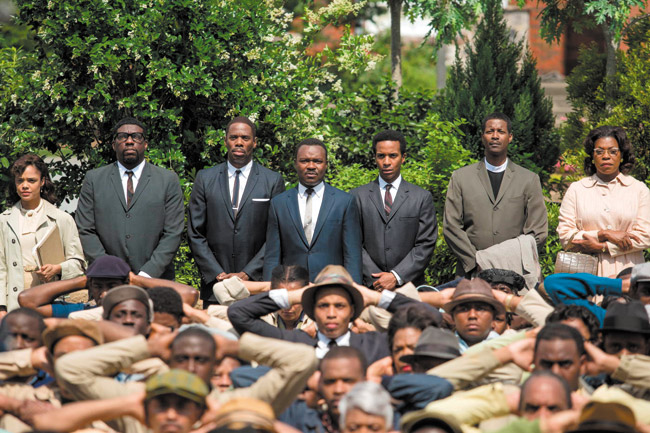Nothing But A Man, More Than A Movie
Selma begins with Martin Luther King Jr. in Oslo, Norway, trying to tie an unfamiliar neckpiece before going on stage to accept the 1964 Nobel Peace Prize. Wife Coretta Scott King helps him. The tone is quiet, almost domestic.
Cut to a scene with four black girls in Sunday dress walking down the interior stairs of a church to Sunday school. It’s shot in bright, almost heavenly light — four African-American angels, childish and innocent. Oh, so innocent.
Then a violent explosion, with all the stereophonic, percussive sound modern filmmakers and theaters can convey. The audience gasps, flinching into their seats. Some cover their eyes — even those who know their history well enough or have lived long enough to know what had been about to happen.
Four children died in that explosion: Addie Mae Collins, Cynthia Wesley, Carole Robertson and Denise McNair — all victims of Ku Klux Klan terrorism.
Selma is a violent film. It deals with three months in early 1965, and three attempts by civil rights demonstrators to march from Selma to Montgomery, Ala., in support of a voting rights bill. On March 7, the first of the attempts, Sheriff Jim Clark launched troopers to club some 600 non-violent demonstrators.
It came to be known as “Bloody Sunday.”
It’s also a film about politics. Lyndon Johnson supported civil rights as Senate majority leader in the 1950s, and as president from 1963 to 1968. But Martin Luther King Jr., Ralph Abernathy, Hosea Williams and the legions of brave men and women who marched with them pushed Johnson further, faster toward a voting rights bill.
They used the enormous, transformative power of television. Following World War II, a television set became the most dynamic piece of furniture in homes across America. Its moving images in black-and-white then color doomed racial violence and apartheid in the South.
Still, despite the rave reviews it’s received, Selma is a flawed movie. The first 30 of its 127 minutes barely move at all. Far too much time is given to strains in the relationship between King and wife, far too many close shots of long silences. And it tries to cram the emotion of a 150-year struggle for racial equality into two hours. It doesn’t fit.
Worse, the King estate refused to allow Selma‘s producers to use his speeches in the movie. King spoke the moral imperative of the United States better than any public figure in American history.
At the final, triumphant conclusion of the 50-mile march to Montgomery, King spoke to a crowd of 10,000: “I know you are asking today, ‘How long will it take?’ Somebody’s asking, ‘How long will prejudice blind the visions of men, darken their understanding and drive bright-eyed wisdom from her sacred throne?’ Somebody’s asking, ‘When will wounded justice, lying prostrate on the streets of Selma and Birmingham and communities all over the South, be lifted from this dust of shame to reign supreme among the children of men?’ …
“I come to say to you this afternoon, however difficult the moment, however frustrating the hour, it will not be long, because ‘truth crushed to earth shall rise again.’ How long? Not long, ‘because no lie can live forever.’ How long? Not long? Not long, ‘because you shall reap what you sow.’
“How long? Not long, because the arc of the moral universe is long, but it bends toward justice.”
Selma tries hard. It can draw tears. But it doesn’t catch that “arc of the moral universe.”
dbboylan70@gmail.com






